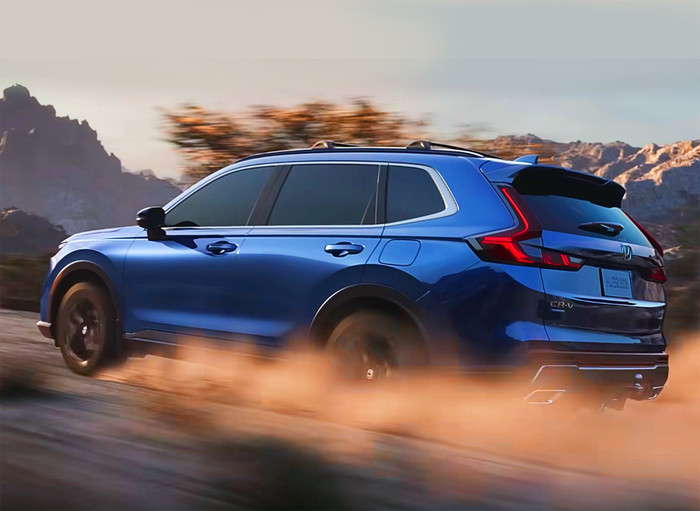The perfect choice to accompany more aware motorists in the environmental transition, the Honda CR-V offers a timely response to individual use and driving needs with the two Full Hybrid and Plug-in Hybrid versions.
Both powerful and efficient hybrid propulsion systems are based on a 2.0 4-cylinder unit from the i-VTEC series which operates according to the Atkinson cycle which uses a multi-stage direct injection system.
The overall power output is 184 HP, both with the Hev (hybrid) or Phev (plug-in hybrid) scheme.
In particular, the CR-V Hybrid uses a two-engine Honda system which is an innovative solution that responds to the need to reduce emissions and cut fuel consumption, without compromising on-board spaciousness and performance.
Smaller, lighter, more powerful and more efficient than the previous generation, it consists of five main components.
They are the electric generator motor (which also supplies energy to the hybrid battery), the electric propulsion motor (directly drives the wheels) and the Atkinson cycle petrol engine.
This is connected to the electric generator/starter motor to function as an electric generator, and provide energy to the hybrid battery and/or electric propulsion unit.
Finally there is the Intelligent Power Unit (IPU) which houses the battery and its control hardware and the Power Control Unit (PCU) which is the 'brain' of the system and controls all the hybrid functions.
The Honda CR-V Hev starts from a standstill in 100% electric mode and as soon as the battery runs out of charge (a couple of km of autonomy) the petrol engine starts and supplies it with new energy - a very quick operation - to support the operation at low speed with minimal emissions.
If the battery is sufficiently charged, pure EV mode will also be available at the press of a button, offering a range of around 2 km with zero emissions depending on driving conditions.
In the city, it is not the CR-V Hev driver who chooses the optimal strategy, but this action is entrusted to the control unit which instantly switches from 100% electric (engine off) to electric fueled by the engine, without anyone on board you will only notice this by looking at the flow indicator.
At a cruising speed of 60 km/h, for example, the CR-V Hybrid travels in EV mode for over half the time while at 100 km/h, it will remain in EV Drive mode for approximately a third of the time.
When you increase speed, the car uses the Engine Drive mode, intended for driving on extra-urban roads, and which involves the direct connection of the engine to the wheels through a lock-up clutch.
In some situations this 100% petrol configuration can be integrated with the on-demand boost function to integrate the engine torque under certain conditions.
Thanks to the 'self-rechargeable' electrical architecture which does not require connections to the grid with external cables, the CR-V Hybrd offers a range of 960 km using a full tank of fuel and the different phases of electric operation.
And CO2 emissions are limited to 110 g/km.
Reproduction reserved © Copyright ANSA

